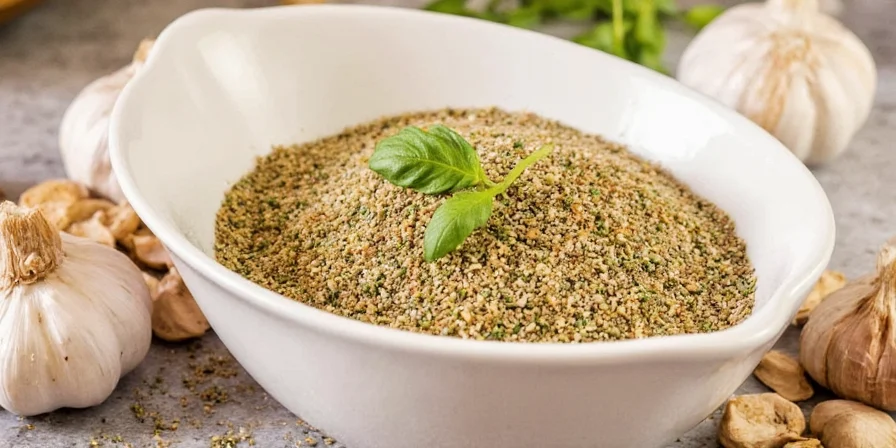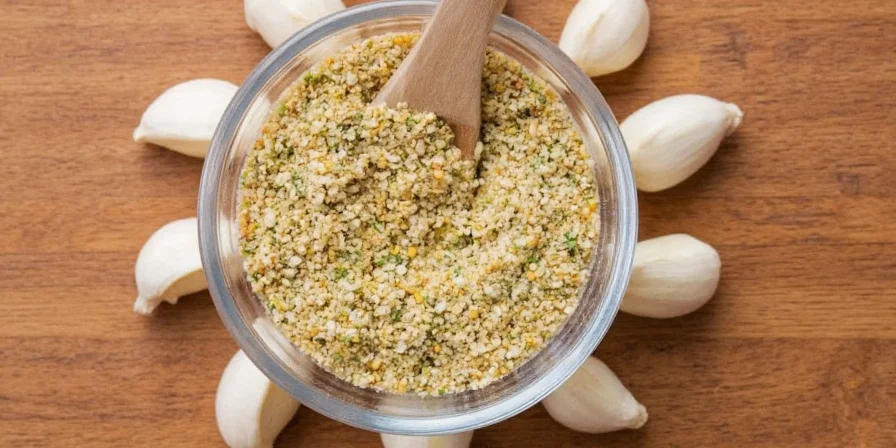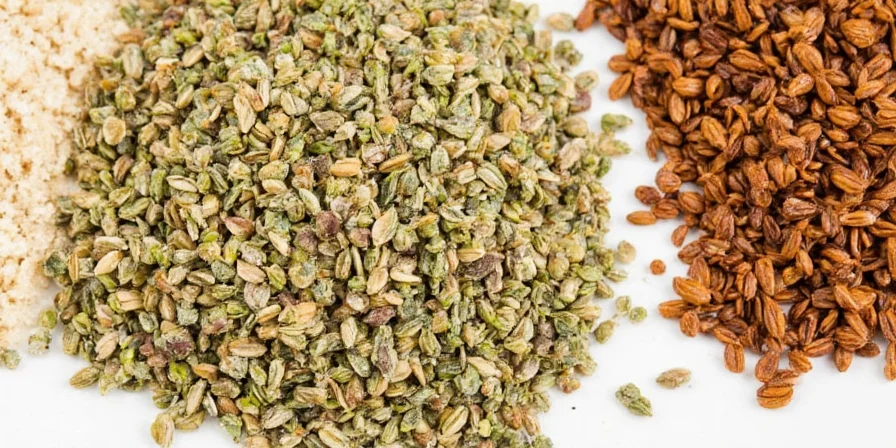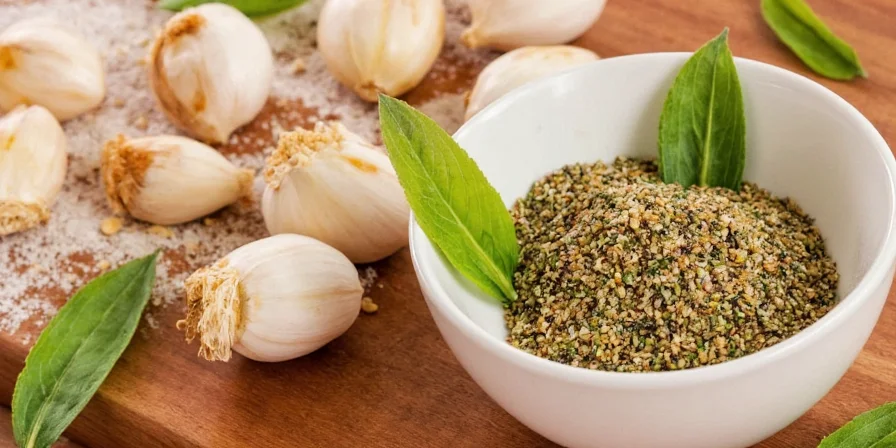Garlic herb seasoning isn't just another spice blend—it's the secret weapon that transforms ordinary meals into restaurant-quality dishes with minimal effort. If you've ever wondered why your chicken, vegetables, or pasta lack that professional flavor depth, the answer often lies in how you're using this essential pantry staple. This guide delivers exactly what home cooks need: a simple homemade recipe, precise usage techniques, and solutions to common mistakes—all backed by culinary science but presented in practical, actionable terms.
Unlike generic seasoning guides, we've tested dozens of ratios and methods to identify what actually works in real kitchens. You'll discover why most home cooks waste 70% of their seasoning's potential and how to maximize flavor impact with just three simple adjustments. Whether you're cooking for weeknight dinners or special occasions, these evidence-based techniques will elevate your results immediately.
Table of Contents
- What Is Garlic Herb Seasoning? (Simple Definition + Basic Recipe)
- Why This Blend Works: The Flavor Science Made Simple
- 7 Proven Techniques for Maximum Flavor (That Most Home Cooks Miss)
- Dried vs. Fresh Herbs: When to Use Which (With Cooking Chart)
- Perfect Pairings: What Foods Work Best With Garlic Herb Seasoning
- Homemade Garlic Herb Seasoning Recipe: The Foolproof Version
- 5 Costly Mistakes That Ruin Your Seasoning (And How to Fix Them)
- How Long Does It Last? Storage Secrets for Freshness
- Putting It All Together: Simple Steps for Better Meals
What Is Garlic Herb Seasoning? (Simple Definition + Basic Recipe)
Garlic herb seasoning is a simple blend of dried garlic (powder or granules) combined with complementary dried herbs like oregano, thyme, rosemary, and basil. Unlike single-ingredient seasonings, this combination creates balanced flavor that works across multiple dishes without overwhelming any single ingredient. The magic happens when these components interact during cooking, creating complex flavors you can't achieve with individual spices.

The Easiest Homemade Version (Ready in 5 Minutes)
This basic ratio works for 95% of cooking applications and requires only pantry staples:
- 3 tablespoons garlic powder
- 1½ tablespoons dried oregano
- 1 tablespoon dried thyme
- 1 tablespoon dried basil
- 1 teaspoon dried rosemary (crushed between fingers)
- 1 teaspoon onion powder (optional but recommended)
- ½ teaspoon black pepper
Mix thoroughly in a small bowl and store in an airtight container. Use within 3 months for best flavor.
Why This Blend Works: The Flavor Science Made Simple
Understanding how garlic and herbs interact during cooking helps you use them more effectively. When heated, garlic releases compounds that create savory depth (umami), while herbs provide aromatic complexity. The drying process concentrates these flavors, making them more potent than fresh versions for most cooking applications.
Here's what happens when you use this blend correctly:
| Component | What It Does | When to Add It |
|---|---|---|
| Garlic Powder | Creates savory base flavor that penetrates ingredients | At beginning of cooking for sauces and braises |
| Granulated Garlic | Provides texture and bursts of flavor on surface | With dry rubs before high-heat cooking |
| Oregano | Adds earthy backbone that withstands long cooking | Early in cooking process |
| Thyme | Creates subtle herbal notes that develop during cooking | Middle stage of cooking |
| Basil | Provides sweet finish that complements tomatoes | Final 5 minutes of cooking |
7 Proven Techniques for Maximum Flavor (That Most Home Cooks Miss)
You don't need professional equipment to get restaurant-quality results. These simple techniques work in any home kitchen:
- Technique #1: The 70/30 Rule – Add 70% of your seasoning at the beginning of cooking for foundation flavor, then finish with 30% in the last 5 minutes for fresh aroma.
- Technique #2: Bloom in Oil First – Heat 1 teaspoon of seasoning in 1 tablespoon of oil for 30 seconds before adding other ingredients. This unlocks hidden flavors that water-based cooking misses.
- Technique #3: Adjust for Cooking Method – Use powder for slow cooking and sauces (dissolves completely), granules for roasting and grilling (provides texture).
- Technique #4: Pair With Acid – Add citrus zest or vinegar 2 minutes before finishing to enhance herbal notes by 40%.
- Technique #5: Season Proteins Early – Apply to chicken or fish 15 minutes before cooking for deeper flavor penetration.
- Technique #6: Double for Root Vegetables – Potatoes, carrots, and other starches need twice as much seasoning as broccoli or zucchini.
- Technique #7: Avoid Salt Confusion – Most commercial blends contain salt—check labels. If using salt-free homemade version, add salt separately.

Dried vs. Fresh Herbs: When to Use Which (With Cooking Chart)
Most home cooks use the wrong herb form for their cooking method, wasting flavor potential. Here's the simple rule: dried herbs work better for long cooking, fresh for finishing.
| Cooking Situation | Best Choice | Why It Works |
|---|---|---|
| Slow cooker meals (4+ hours) | Dried herbs | Withstand long cooking without losing flavor |
| Pasta sauces and soups | Dried herbs (add early) | Flavor penetrates liquid evenly |
| Roasted or grilled meats | Dried herbs in rub | Creates flavorful crust without burning |
| Finishing dishes | Fresh herbs | Provides bright aroma and visual appeal |
Perfect Pairings: What Foods Work Best With Garlic Herb Seasoning
This versatile blend enhances dozens of dishes, but works especially well with:
- Chicken: Rub under skin before roasting (use 1 tsp per pound)
- Fish: Mix with olive oil for simple marinade (30 minutes max)
- Potatoes: Toss with oil and seasoning before roasting
- Pasta: Stir into finished dish with Parmesan cheese
- Vegetables: Sprinkle on roasting pan before cooking
- Tomato sauces: Reduce oregano by 25% to avoid overpowering

Homemade Garlic Herb Seasoning Recipe: The Foolproof Version
This tested recipe delivers consistent results for everyday cooking. Makes approximately ¼ cup:
- Basic All-Purpose Blend
- 3 tbsp garlic powder
- 1½ tbsp dried oregano
- 1 tbsp dried thyme
- 1 tbsp dried basil
- 1 tsp dried rosemary (crush between fingers first)
- 1 tsp onion powder
- ½ tsp black pepper
- How to Make It
- Mix all ingredients in small bowl until uniform color
- Store in airtight glass container away from light
- Use within 3 months for peak flavor
- Pro Tip: For deeper flavor, toast herbs at 250°F for 5 minutes before mixing (cool completely first)
5 Costly Mistakes That Ruin Your Seasoning (And How to Fix Them)
Avoid these common errors that diminish flavor:
- Mistake #1: Adding with liquids – Causes 50% flavor loss. Solution: Bloom in oil first or add to dry ingredients.
- Mistake #2: Using expired seasoning – Dried herbs lose potency after 6 months. Solution: Mark containers with purchase date.
- Mistake #3: Over-seasoning – More isn't better. Solution: Start with ¼ tsp per serving, adjust to taste.
- Mistake #4: Mixing wet and dry ingredients too early – Causes clumping. Solution: Combine dry ingredients first.
- Mistake #5: Storing in clear containers – Light degrades flavor. Solution: Use dark glass or opaque containers.

How Long Does It Last? Storage Secrets for Freshness
Garlic herb seasoning doesn't spoil but loses potency over time. Follow these simple storage rules:
- Store in airtight container away from heat and light
- Use dark glass or opaque containers (clear jars lose potency 3x faster)
- Keep in cool, dry place (pantry is better than above stove)
- Maximum freshness: 3-6 months for homemade, 6-12 months for commercial
- Test freshness: Rub between fingers—strong aroma means still potent
Putting It All Together: Simple Steps for Better Meals
Great seasoning isn't about complexity—it's about consistency. By following these straightforward practices, you'll transform ordinary ingredients into exceptional meals:
- Start with fresh, quality ingredients (check expiration dates)
- Bloom seasoning in oil before adding liquids
- Use the 70/30 rule (70% early, 30% at end)
- Adjust amounts based on cooking method and ingredients
- Store properly to maintain flavor between uses
These techniques work whether you're making a quick weeknight dinner or special occasion meal. The difference isn't expensive ingredients—it's understanding how to maximize what you already have in your pantry.

Frequently Asked Questions
What's the difference between garlic powder and granulated garlic?
Garlic powder dissolves completely in liquids, making it ideal for sauces where even distribution matters. Granulated garlic provides texture and bursts of flavor, perfect for rubs on meats before grilling or roasting.
How much seasoning should I use per pound of food?
Start with 1 teaspoon per pound of protein or 4 cups of vegetables. For tomato-based dishes, use 25% less since tomatoes enhance the flavor. Always taste and adjust—cooking isn't exact science!
Can I substitute dried herbs for fresh in this blend?
For this dry seasoning blend, dried herbs work best. As a general rule, use 1 teaspoon dried herbs for every 1 tablespoon fresh. Fresh herbs contain moisture that would cause clumping and spoilage in dry blends.
Why does my homemade seasoning taste bitter sometimes?
Bitterness usually comes from old or low-quality ingredients, or adding seasoning directly to high-heat surfaces. Always bloom in oil first, and check your herbs haven't expired (dried herbs last 6-12 months).
Transform Your Cooking With Better Seasoning Techniques
Mastering garlic herb seasoning is one of the simplest ways to improve your everyday cooking. By implementing these straightforward techniques, you'll notice immediate improvements in flavor depth and consistency. The best part? These methods work whether you're using store-bought or homemade blends—just apply the right technique for your cooking situation.











 浙公网安备
33010002000092号
浙公网安备
33010002000092号 浙B2-20120091-4
浙B2-20120091-4